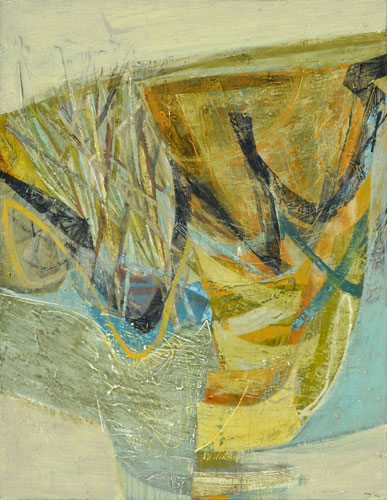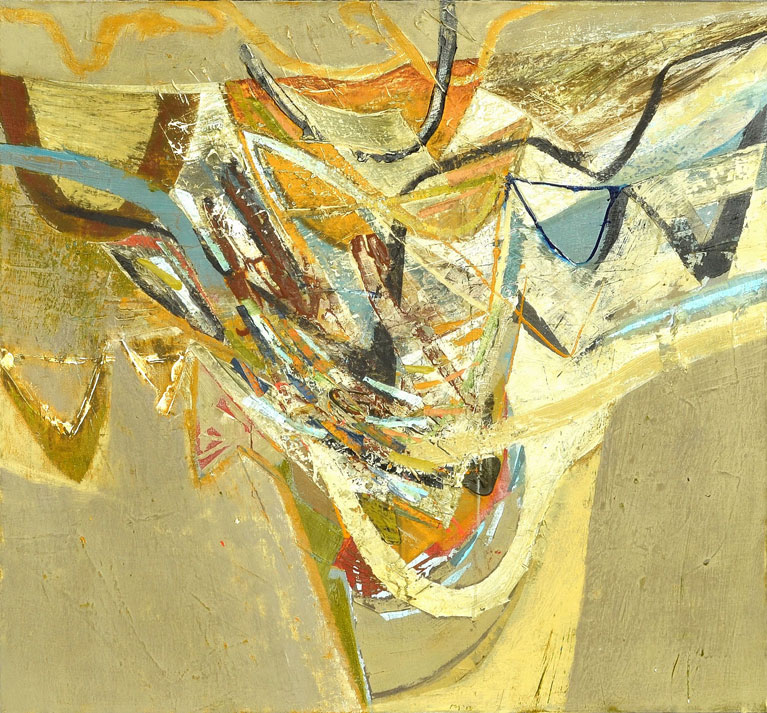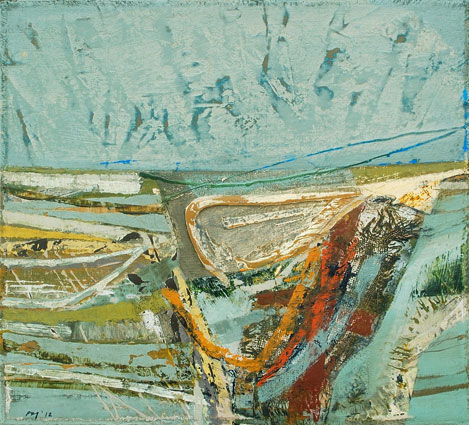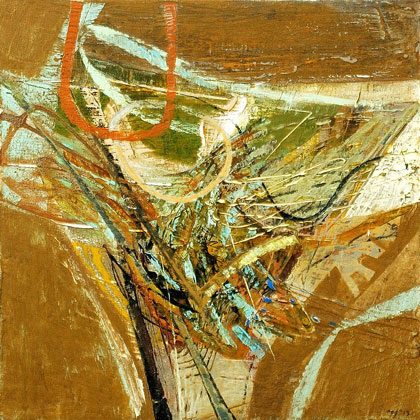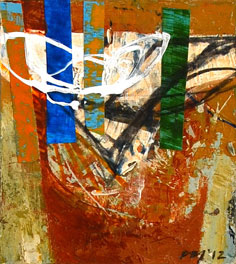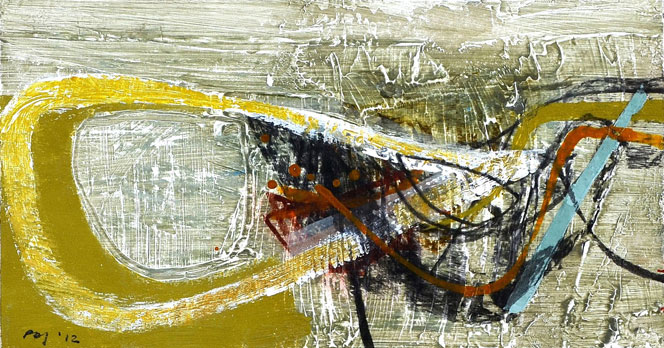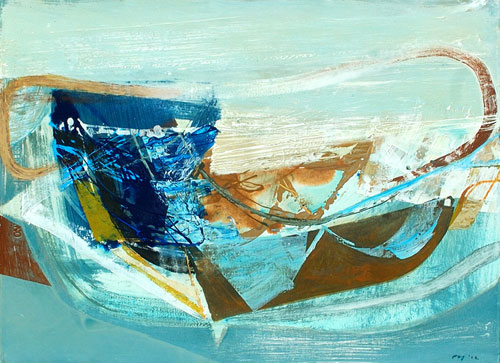Peter Joyce
b.1964
Click here for a ‘second looking’ - review of the recent exhibition by Gary Topp
"All of the paintings in the exhibition have their starting point in the Marais Breton Vendéen, 250 square kilometres of reclaimed marshland in western France. This flat, low lying land, barely above sea-level, doesn't appear to alter much in appearance as it's criss-crossed by foot, bike or car, yet there are many aspects to this man-made landscape and depending on whether you are in an area of fresh water marsh or salt water marsh (fed from the Baie de Bourgneuf) it is deceptively different.
Through the ages (the last 2000 years), the uses for this land haven't changed much at all. What has changed is the scale of use. The Romans started reclaiming the land for salt production, once there were more than 20,000 saltpans, now only a handful survive as a business. Ports were once 30 kilometres inland from the present-day shore, they are now just 4 small ports in operation along this new coastline. These are harbours for the boats which service the small, family run oyster farms which are doted along the low tide line. As man moved out, wildlife moved in. Countless species of birds, mammals, reptiles and amphibians have made the marsh their home, some introduced, some native.
I enjoy this landscape as much for the evidence of times long passed as I do for the wildlife, the fresh sea air and the tranquillity. It is the remnants of former jetties and hunting hides or gates made with cobbled together pieces of wood, metal, cord and wire which feed my work as much as the actual landscape itself. The weather and change of seasons have also influenced my approach to the making of individual paintings. The work towards this exhibition was started just before the end of the summer in 2012 and the change from summer into autumn then autumn into winter have had a strong effect on the pictures produced. The change in the angles of the sun, the decreasing daylight hours, and the dry warmth of summer replaced by the moody and ever darkening skies of winter has had a strong impact on the colour of the exhibition.
These paintings also reflect my deepening understanding of how this place works. The moons phases and the tides, the creek systems of fresh and salt water, and the existence of differing plant species depending on how saturated the land is. It is my new knowledge of these fundamental aspects which enables me to make these works less representational, I'm now composing paintings based on how the Marais Breton Vendéen functions and not just its extraordinary and deceptive appearance."
Peter Joyce - 31 December 2012.

